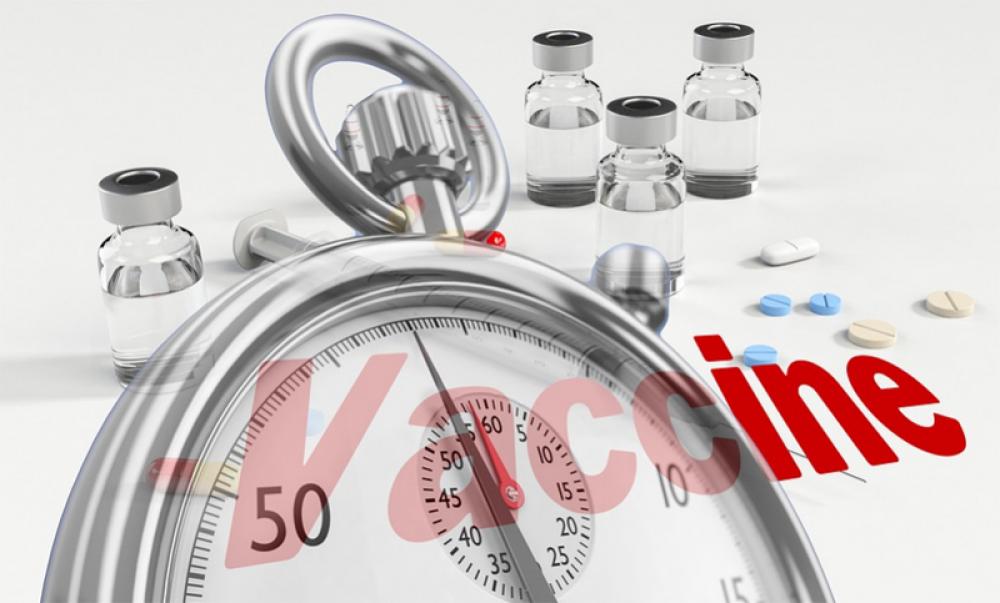Just Earth News | @justearthnews | 16 Nov 2020

Pixabay
London: Moderna, Inc, a biotechnology company pioneering messenger RNA (mRNA) therapeutics and vaccines to create a new generation of transformative medicines for patients, on Monday said its vaccine candidate against COVID-19 has shown 94.5 percent efficiency.
This study, known as the COVE study, enrolled more than 30,000 participants in the U.S. and is being conducted in collaboration with the National Institute of Allergy and Infectious Diseases (NIAID), part of the National Institutes of Health (NIH), and the Biomedical Advanced Research and Development Authority (BARDA), part of the Office of the Assistant Secretary for Preparedness and Response at the U.S. Department of Health and Human Services.
The primary endpoint of the Phase 3 COVE study is based on the analysis of COVID-19 cases confirmed and adjudicated starting two weeks following the second dose of vaccine.
This first interim analysis was based on 95 cases, of which 90 cases of COVID-19 were observed in the placebo group versus 5 cases observed in the mRNA-1273 group, resulting in a point estimate of vaccine efficacy of 94.5% (p <0.0001).
A secondary endpoint analyzed severe cases of COVID-19 and included 11 severe cases (as defined in the study protocol) in this first interim analysis. All 11 cases occurred in the placebo group and none in the mRNA-1273 vaccinated group.
The 95 COVID-19 cases included 15 older adults (ages 65+) and 20 participants identifying as being from diverse communities (including 12 Hispanic or LatinX, 4 Black or African Americans, 3 Asian Americans and 1 multiracial).
The interim analysis included a concurrent review of the available Phase 3 COVE study safety data by the DSMB, which did not report any significant safety concerns.
A review of solicited adverse events indicated that the vaccine was generally well tolerated. The majority of adverse events were mild or moderate in severity.
Grade 3 (severe) events greater than or equal to 2% in frequency after the first dose included injection site pain (2.7%), and after the second dose included fatigue (9.7%), myalgia (8.9%), arthralgia (5.2%), headache (4.5%), pain (4.1%) and erythema/redness at the injection site (2.0%).
These solicited adverse events were generally short-lived. These data are subject to change based on ongoing analysis of further Phase 3 COVE study data and final analysis.
Preliminary analysis suggests a broadly consistent safety and efficacy profile across all evaluated subgroups.
As more cases accrue leading up to the final analysis, the Company expects the point estimate for vaccine efficacy may change. The Company plans to submit data from the full Phase 3 COVE study to a peer-reviewed publication.
“This is a pivotal moment in the development of our COVID-19 vaccine candidate. Since early January, we have chased this virus with the intent to protect as many people around the world as possible. All along, we have known that each day matters. This positive interim analysis from our Phase 3 study has given us the first clinical validation that our vaccine can prevent COVID-19 disease, including severe disease,” said Stéphane Bancel, Chief Executive Officer of Moderna.
Bancel said, “This milestone is only possible because of the hard work and sacrifices of so many."
"I want to thank the thousands of participants in our Phase 1, Phase 2 and Phase 3 studies, and the staff at our clinical trial sites who have been on the front lines of the fight against the virus.
"They are an inspiration to us all.
"I want to thank the NIH, particularly NIAID, for their scientific leadership including through years of foundational research on potential pandemic threats at the Vaccine Research Center that led to the discovery of the best way to make Spike protein antigens that are being used in our vaccine and others’. I want to thank our partners at BARDA and Operation Warp Speed who have been instrumental to accelerating our progress to this point," Bancel said.
Bancel said: "Finally, I want to thank the Moderna team, our suppliers and our partners, for their tireless work across research, development and manufacturing of the vaccine."
"We look forward to the next milestones of submitting for an EUA in the U.S., and regulatory filings in countries around the world, while we continue to collect data on the safety and efficacy of the vaccine in the COVE study.
"We remain committed to and focused on doing our part to help end the COVID-19 pandemic," Bancel said.
Based on these interim safety and efficacy data, Moderna intends to submit for an Emergency Use Authorization (EUA) with the U.S. Food and Drug Administration (FDA) in the coming weeks and anticipates having the EUA informed by the final safety and efficacy data (with a median duration of at least 2 months).
Moderna also plans to submit applications for authorizations to global regulatory agencies.
Moderna is working with the U.S. Centers for Disease Control and Prevention (CDC), Operation Warp Speed and McKesson (NYSE: MCK), a COVID-19 vaccine distributor contracted by the U.S. government, as well as global stakeholders to be prepared for distribution of mRNA-1273, in the event that it receives an EUA and similar global authorizations.
By the end of 2020, the Company expects to have approximately 20 million doses of mRNA-1273 ready to ship in the U.S.
The Company remains on track to manufacture 500 million to 1 billion doses globally in 2021.
On November 10, the American Medical Association (AMA) issued a Current Procedural Terminology (CPT) code to report vaccination with mRNA-1273 (code: 91301).
Moderna recently announced further progress towards ensuring the distribution, storage and handling of the vaccine can be done using existing infrastructure.